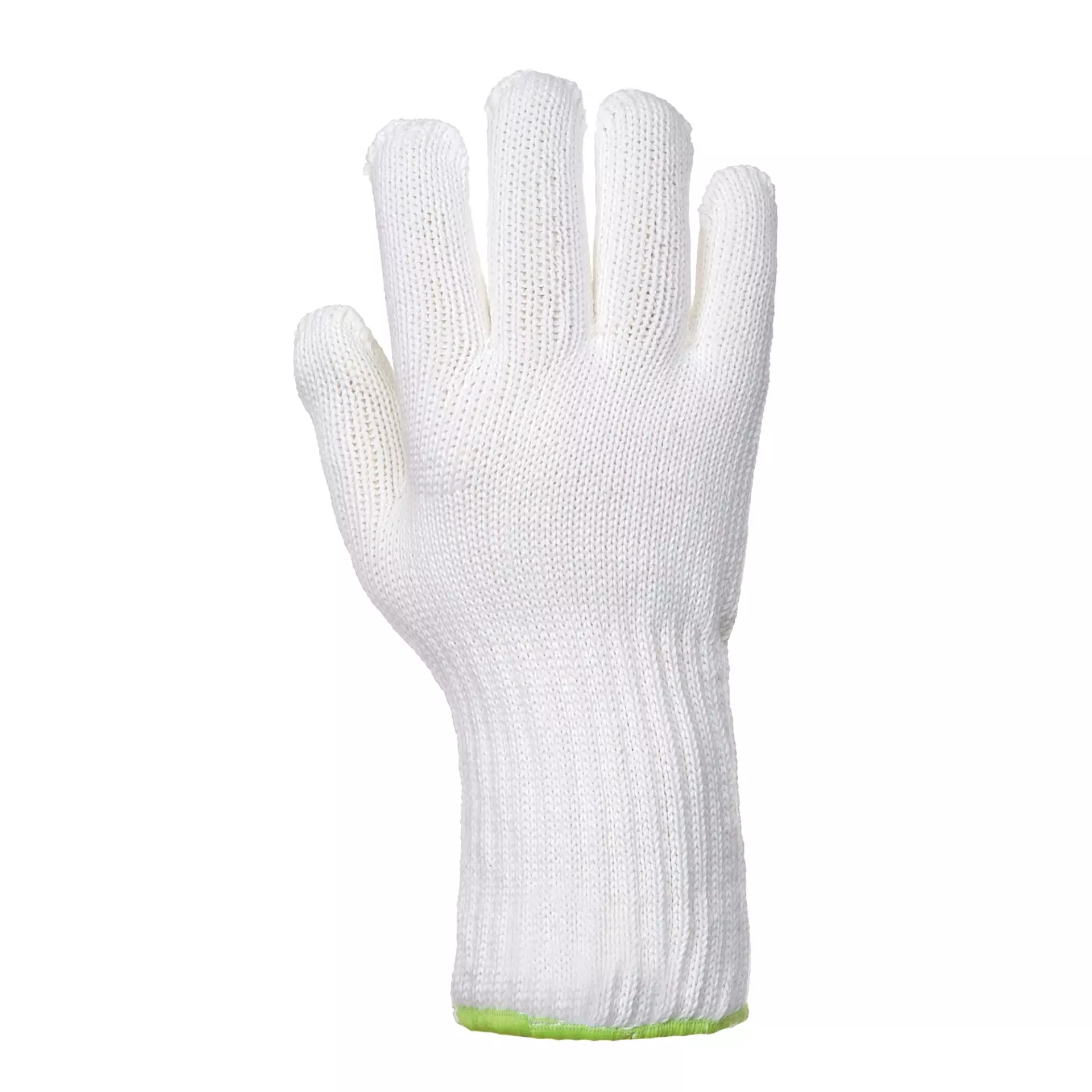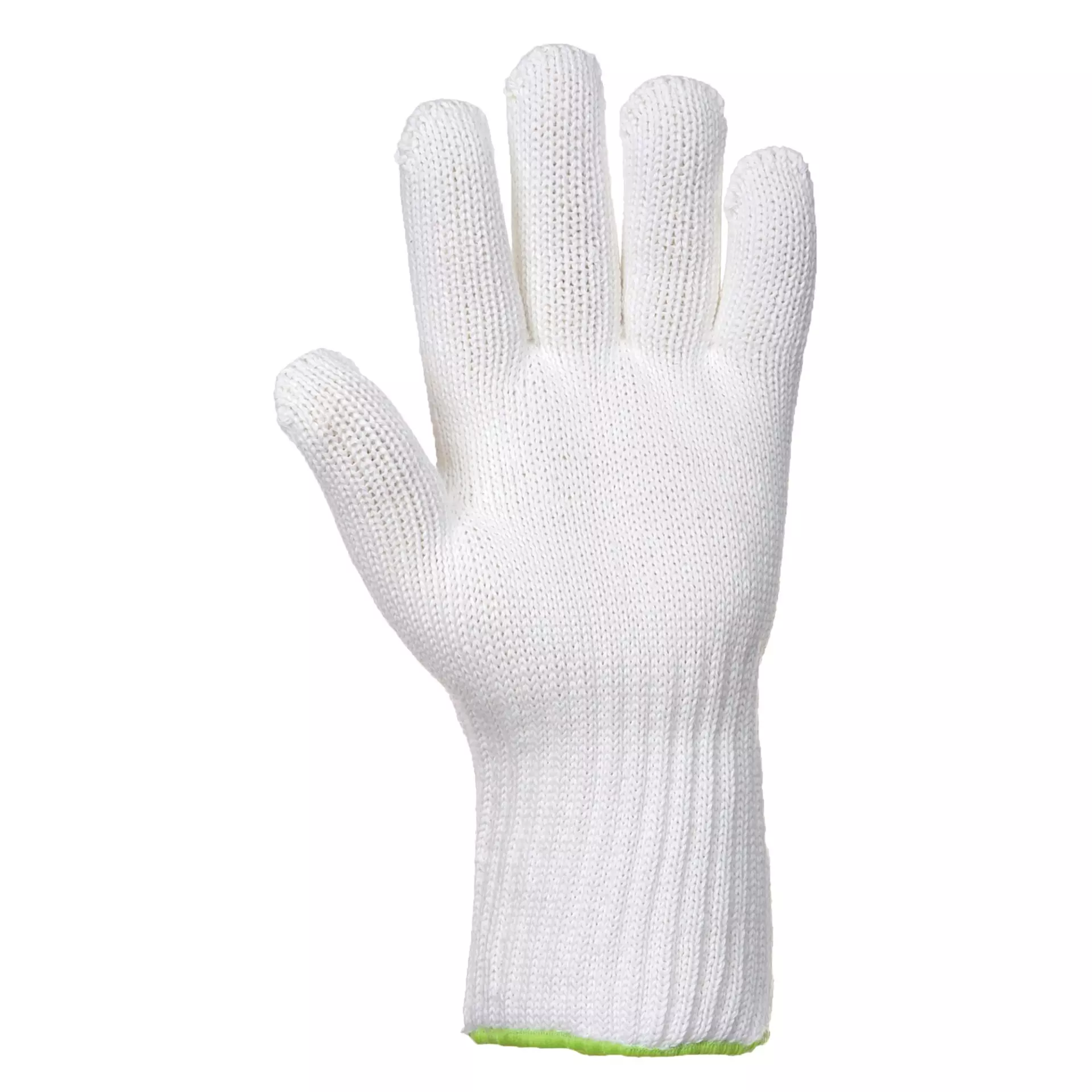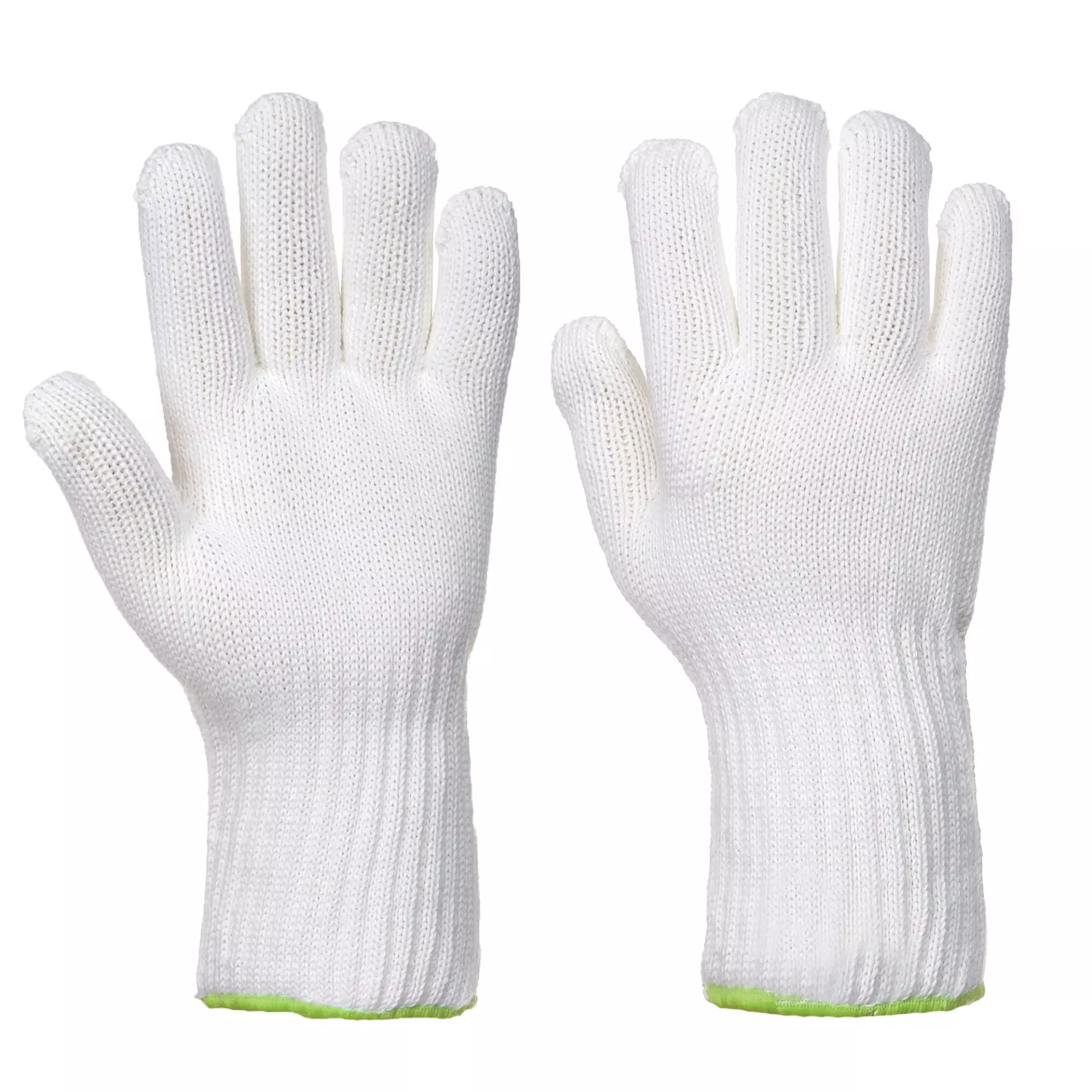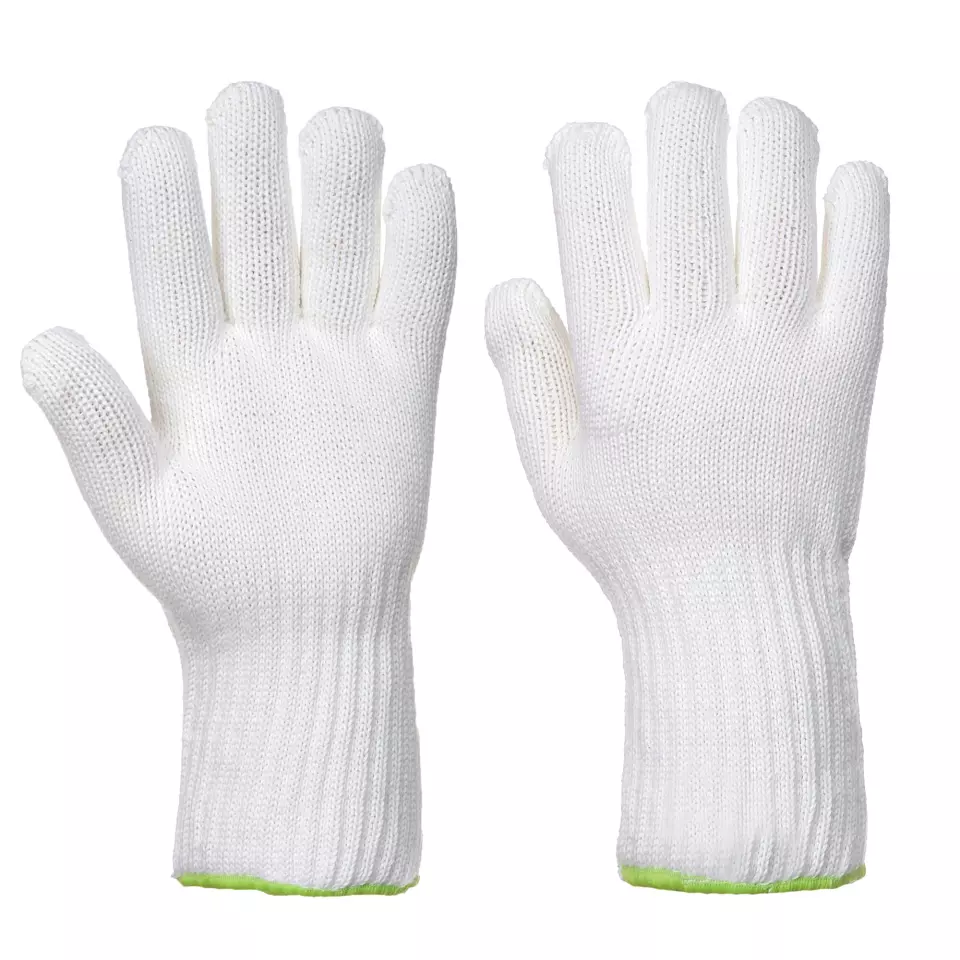


Features You'll Love

EN 388 · Abrasion Resistance Level 1
Provides basic resistance against scraping and surface wear for low-risk tasks.

EN 388 · Tear Resistance Level 4
Offers the highest level of protection against tearing, withstanding a strong force before ripping.
Portwest
Heat Resistant 250˚C Glove, White, 10 pairs
Heat Resistant 250˚C Glove, White, 10 pairs
4.8 / 5
117,84 €
Price per 10 pairs
11,78 € / pair
Choose size
Free delivery
Features You'll Love

EN 388 · Abrasion Resistance Level 1
Provides basic resistance against scraping and surface wear for low-risk tasks.

EN 388 · Tear Resistance Level 4
Offers the highest level of protection against tearing, withstanding a strong force before ripping.
Product description
This heat-resistant glove provides reliable protection against contact heat up to 250°C for 15 seconds, constructed from viscose with a cotton liner for durability and comfort. The seamless, ambidextrous design with a 30cm long cuff offers versatility for both left and right-handed users. Machine washable at 30°C and CE certified, this glove meets multiple European safety standards for workplace protection.
Product Features:
- Seamless construction for enhanced comfort
- Ambidextrous design suitable for left or right-handed users
- Long cuff version with 30cm glove length
- Machine washable at 30°C
- Robust 7 gauge liner
Technical Details:
- Material composition: Viscose with cotton liner
- Contact heat protection up to 250°C for 15 seconds
- CE certified
Standards:
- EN ISO 21420: 2020 Dexterity 1
- EN 388: 2016 + A1: 2018 (1341X)
- EN 407: 2020 (4231XX)